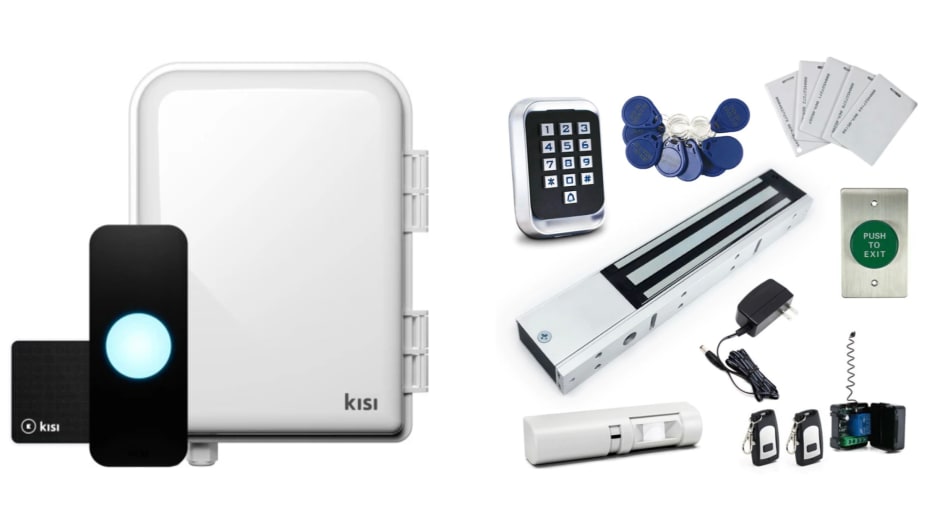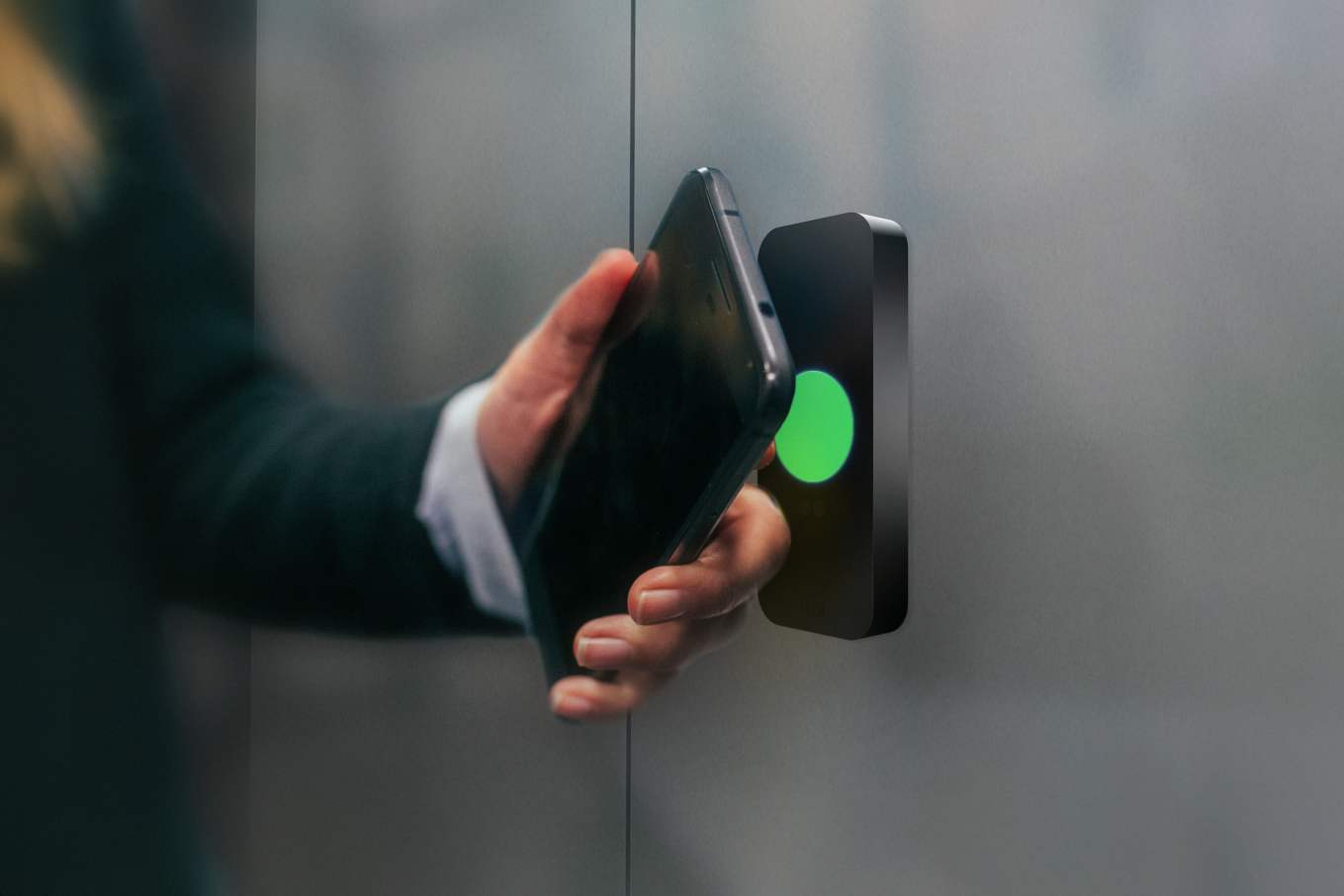A single door access control system kit is suitable for a single room, small office, or a shop, as well as larger-scale setups like condominiums, apartments, warehouses, garages, or other such installations. Some companies use the single door access control system kit as a test to determine if a certain access control system will serve them well in the long run.
A single-door access control system can be used as a standalone system and integrated with a wider access control system through different communication interfaces like TCP/IP, RS232, or other wireless technologies.

There are different types of single access control systems commonly used in the industry, like keypad, card reader, and biometric systems. Traditionally, they were used in standalone applications. Nowadays, most companies are migrating their single door access control to the cloud, so they can use them in connection with the remote accessibility features.
Door access control basics #
Protecting our physical spaces is crucial to all of us, regardless if we're talking about our private or commercial spaces. And the first step is door access control – this helps guarantee that unauthorized people won't gain access to your spaces.
By incorporating a door access control solution, you control the people allowed to enter or exit, the places they can exit or enter, and the times they are permitted to do that.
Door locks are an important part of the door access system. There are two types – mechanical and electronic.
Mechanical locks are traditional door locks that have been around for ages and don't require electrical energy to operate. These locks rely on physical components such as keys, tumblers, springs, and levers to control access. The locking and unlocking process is typically manual and requires physical manipulation of the lock components.
They can help us control the people and spaces to a certain degree, but not in an automated way. Mechanical door access systems also can't provide records of the people and specific doors being used.
Electronic door locks, on the other hand, require power to function but eliminate the need for a key and offer a plethora of features. Electronic locks utilize electronic components, such as keypads, keycards, biometric scanners, or wireless technologies, to control access.
Electronic locks can offer enhanced security features such as encryption, access logs, and remote monitoring capabilities. Revoking access is one of the most important aspects of security differentiation between mechanical and electronic door access systems.
Understanding single-door access control #
Simply put, access control is ensuring that only the correct people are allowed to access certain spaces or assets. Most access control systems are based around doors, which rely on readers that grant or deny access, meaning that they unlock the door. This happens when an authorized person presents a valid keycard or another type of credential, alerting the reader that a user is requesting entry.
A few different types of single-door access control systems are commonly used in the industry. Some of the most popular are keypad-based, card reader enabled, mobile, and biometric-based systems. Most modern readers can use smartphones or smartwatches as access credentials now.
Traditionally, they are used in standalone applications, but nowadays, people have begun using them in connection with other remote accessibility features through the internet or other technologies.
Similarly, a one-door access control setup can be used as its own standalone system. Still, it can also easily be integrated with a larger access control system through different communication interfaces like TCP/IP, RS232, or other wireless technologies.
Differences between single-door and multi-door access control systems #
The basic difference between single-door, 2-door, 4-door, and 8-door systems relates to the door access control kits’ capacity, functions, and capabilities. The main factors that may differ in terms of their system capacity and features include:
- Number of door locks, card readers, and switches;
- Number of users handled by those systems;
- Number of events or transactions recorded in the system;
- Support for access control technologies;
- The system cost;
- Operations complexity;
- Types of application and mode of authentication;
- Types of configurations like standalone, master-slave, and networked.
As technology evolves, so do the ways we protect our homes and businesses. If you have a single access point you’d like to secure, installing a single-door access control system is a perfect way to do so. Kits of this kind are suitable for places like homes, retail stores, apartments, warehouses, garages, or pretty much any space that has a single door you want to keep secure.
When to use a single door access control system? #
A one-door access control system is perfect for some situations, but less optimal in others. Single-door kits are commonly used for spaces where one door lock and two access readers are sufficient, which helps keep costs and labor down.
They are widely used to restrict unauthorized entry to certain restricted areas or rooms that are not already integrated with centralized access control systems. Special assets, too, can be protected using a single-door access control kit — think copiers, server rooms, and vaults. These systems are typically suitable for small businesses operating out of a single location.
Single-door access control is often unsuitable for facilities that need more than one protected entry point. This should work well if you’re simply adding a new card reader.
However, if you’re implementing an access control system for the first time and need multiple readers, you should consider buying them as part of a package instead of individually. This way, you can save money. It all comes down to what you want to get out of your card readers.
Single-door access control system features #
There are plenty of manufacturers that make access control kits. However, these systems are not all made the same, and these distinctions can make all the difference in your ease of use and safety.
A well-made and reliable one-door access control system will often include a few basic, important features and capabilities. These single-door access control kits should come with one lock, one controller, two readers, and one switch. The two readers will be placed on opposite sides of the door for entry and exit. This should help cut down on passback – when two or more people use one card to enter a space.
There should also be a powerful battery backup, which prevents system failure in the case of a power outage. Other optimizations include features like intruder detection alarms or video cameras.
Every piece of the kit should come with a robust design and physical security cases, which keep them safe from damage. Options for integration with a centralized access control system through interfaces like RS232 and RS485 should be standard.
The reader should also support mobile entry, especially if you plan to expand your system in the future. Easy installation and operation are a must, especially for first-time users who have less experience with the process.

Single-door access control system advantages #
Choosing a single-door access control system has enormous advantages, especially for smaller spaces. For example, a café or a retail space might only require one access point at the front door that is intended only to keep unwanted visitors out during off-hours. And they don’t need all the bells and whistles of a larger system with multiple readers.
The door access control is simplified by having only one reader, making it easier to determine the access levels of cardholders. The entire process is much easier to execute smoothly when it comes to smaller spaces.
Single-door access control system pricing #
A few factors determine the door access control system cost. The upfront cost depends on the installation complexity and the type of access control system you decide on.
Keypad or keyfob and keycard systems are the least costly, followed by smartphone access control systems. Biometric systems are the most expensive.
The licensing fees aren't much of an upfront expense but will influence the ongoing costs needed to operate the system.
To better understand Kisi’s pricing structure, view our access control pricing or connect with us for a custom quote.

Key takeaways #
Access control is the modern way to protect your space. If you’re looking to secure a small facility, test out access control, or add another access point to an existing system, a single-door kit is your best choice. Make sure you do your research before deciding on a system and check which features will work best with your needs. Kisi is the best way to get started with cloud-based access control, which works well for securing anything you want to keep protected.
Ready to give it a go? Get a quote for Kisi's access control system here.


